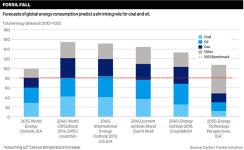Morningstar wants to bring sustainable investing to the masses. The Chicago-based research firm’s new environmental, social and governance scores, which grade more than 20,000 mutual funds and exchange-traded funds listed on its North American and European websites, are the first widely available ESG ratings to report on a portfolio rather than a company level.
Industry experts believe this effort will help ESG to win acceptance among retail investors. But the Morningstar ratings could also pose challenges for pension plan sponsors and asset managers — including those managers that market their products as responsible.
“This is an unprecedented level of information for retail investors to have access to,” says Amy O’Brien, head of responsible investment at $854 billion TIAA Global Asset Management.
Previously, only institutional investors were privy to the data that underpins the Morningstar ratings, observes O’Brien, whose New York–based firm manages assets for some 16,000 institutions, including many U.S. universities and colleges. Now that ESG ratings for investment products are easily available, retail investors will push their pension plans for more highly rated options, she predicts: “Plan sponsors need to be prepared for this.”
Jon Hale, Morningstar’s director of sustainability research, says intensifying demand for socially responsible investments prompted the March launch of the ESG ratings. Hale points to the data from the Washington-based US SIF: The Forum for Sustainable and Responsible Investment showing that between 2012 and 2014 such assets swelled by 76 percent, to $6.57 trillion.
Another study makes him wonder why the market isn’t even bigger: Last year the Morgan Stanley Institute for Sustainable Investing found that 71 percent of individual investors are interested in sustainable investing.

“We took those indicators of increasingly high levels of interest and said, ‘What is keeping this from becoming a more mainstream way of investing?’” Hale explains. “We really focused on the idea that advisers, consultants, investment decision makers and investors themselves don’t have very good tools with which to evaluate investments as one obstacle to converting all this interest into actual invested capital.”
Before the launch of the Morningstar ESG scores, institutional investors already had access to proprietary company-level ESG data from Bloomberg, MSCI, Sustainalytics and others. MSCI has developed a portfolio-level ESG rating system; Scott Perry, a partner in Boston-based NEPC’s endowment and foundation practice, says his consulting firm has worked with the New York–headquartered research and index provider to assess client portfolios from an ESG perspective. Perry, who acknowledges that retail investors have had a tough time figuring out how a given fund performs on the sustainability front, thinks the Morningstar ratings will make the task much easier for them.
To develop its ESG system, Morningstar collaborated with Amsterdam-based research firm Sustainalytics. A portfolio receives an overall ESG rating if at least 50 percent of the companies it invests in are rated by Sustainalytics, which provides two levels of data for each company: an industry-relative measure of its ESG fitness on a scale of 0 to 100; and a controversy score, also out of 100, that factors in potentially damaging headlines like those stemming from the Volkswagen emissions scandal.
Morningstar then rates each fund on a 100-point scale by averaging portfolio companies’ overall scores (with a deduction for any controversies) on an asset-weighted basis, so that those making up a larger portion of invested capital factor more heavily in the final tally.
Morningstar’s ratings won’t always jibe with the self-assessments of portfolio managers that consider their offerings the most sustainable, Hale notes, particularly because the ratings don’t account for ESG-friendly proxy voting guidelines or engagement with problem companies. This could expand the potential universe of funds that address investors’ sustainability concerns and make the way that fund managers market their products less important, he reckons.
“Everybody’s not going to just flock to this small number of explicitly engaged sustainable-investment funds anymore,” Hale says. “Investors can say, ‘Let’s look under the hood and see what’s actually in the portfolio rather than relying on what managers say they’re doing.’”
Andy Mason, a responsible-investment analyst at $373 billion Standard Life Investments, says he welcomes the credentializing effect of the Morningstar ratings. But Mason, whose Edinburgh, Scotland–based firm has integrated sustainable-investment strategies throughout the business, also hopes that interested investors will appreciate all the nuances that comprise an effective ESG strategy.
“The element that can be missed is the responsibility that we have around governance and stewardship of the companies that we invest in,” he says. “Quite often, for certain companies, through engagement we can see a positive trajectory and change that ultimately is supportive of returns for the company and for our portfolio.”
Rivals to the Morningstar system will crop up sooner rather than later, NEPC’s Perry says: “A significant amount of progress is being made in this area, and I would expect that investors will have more and better options for portfolio-level ESG rating in the near term.”





